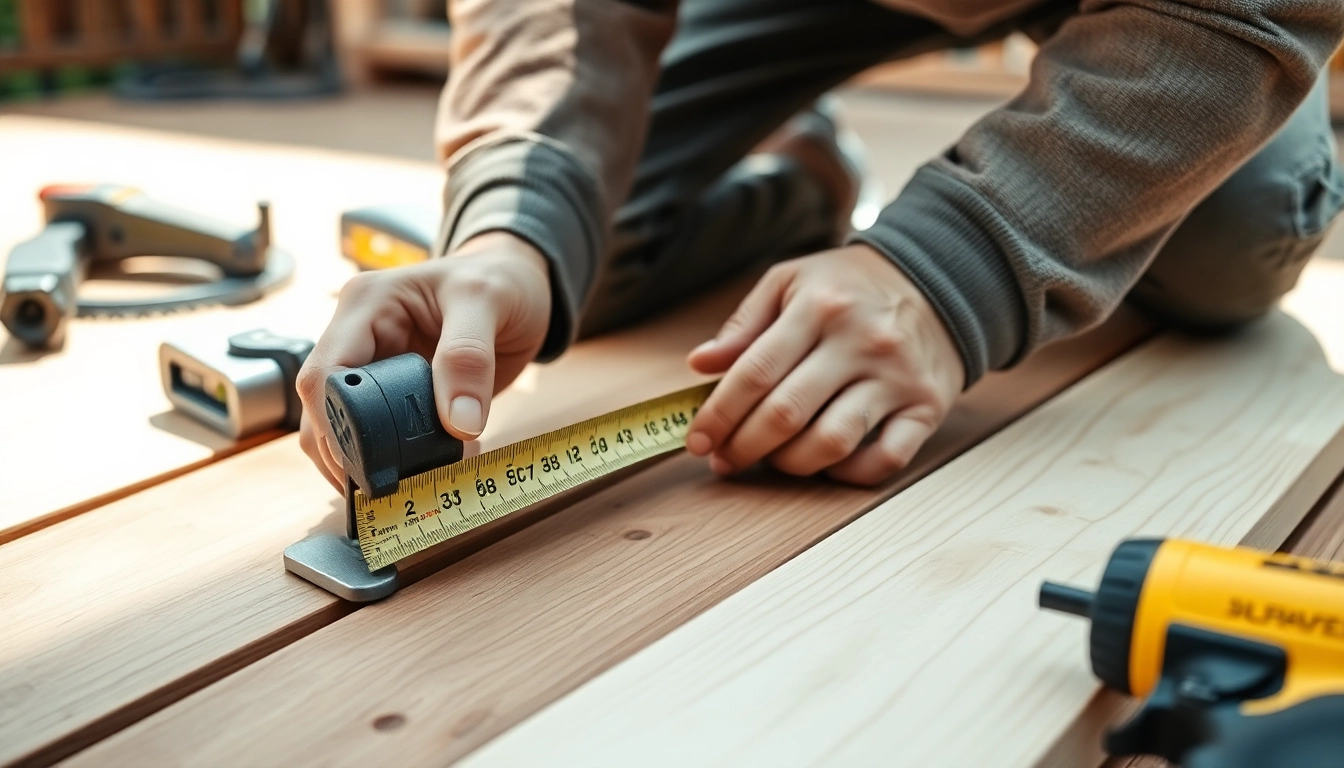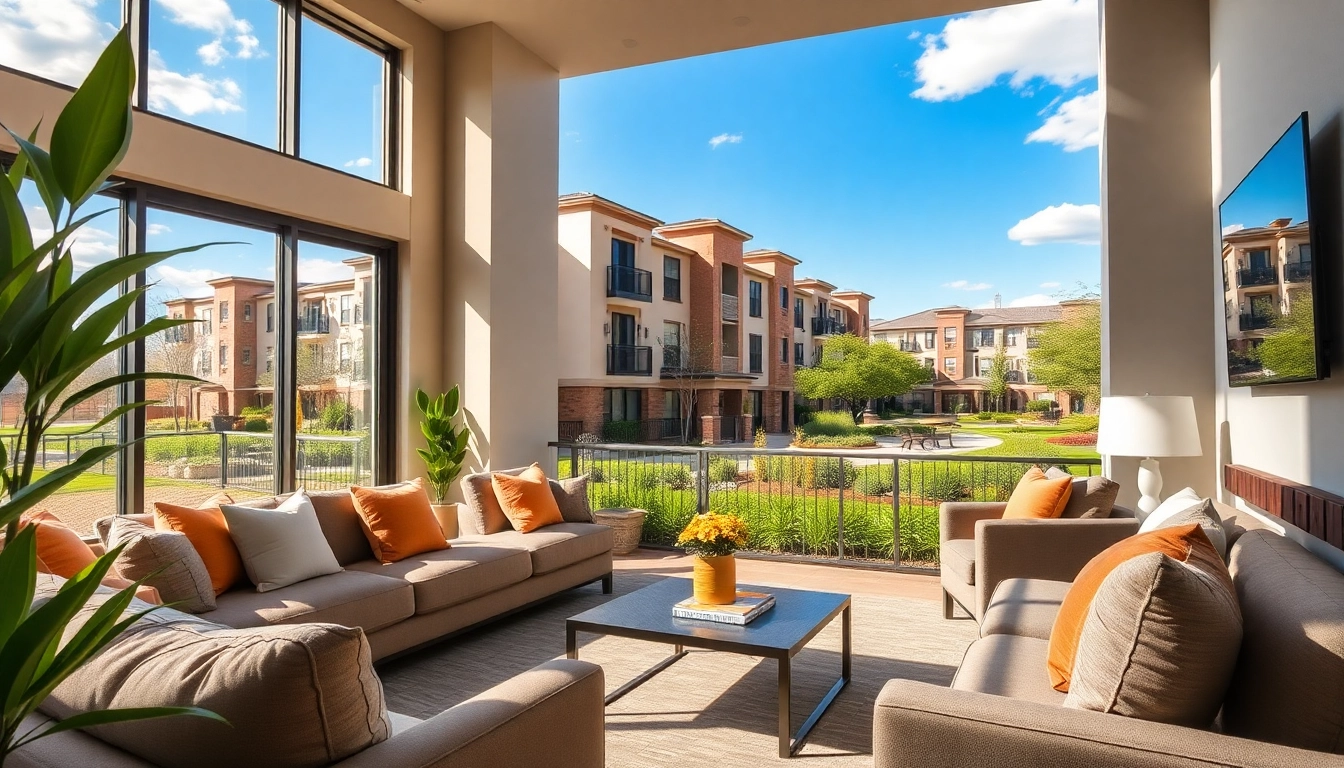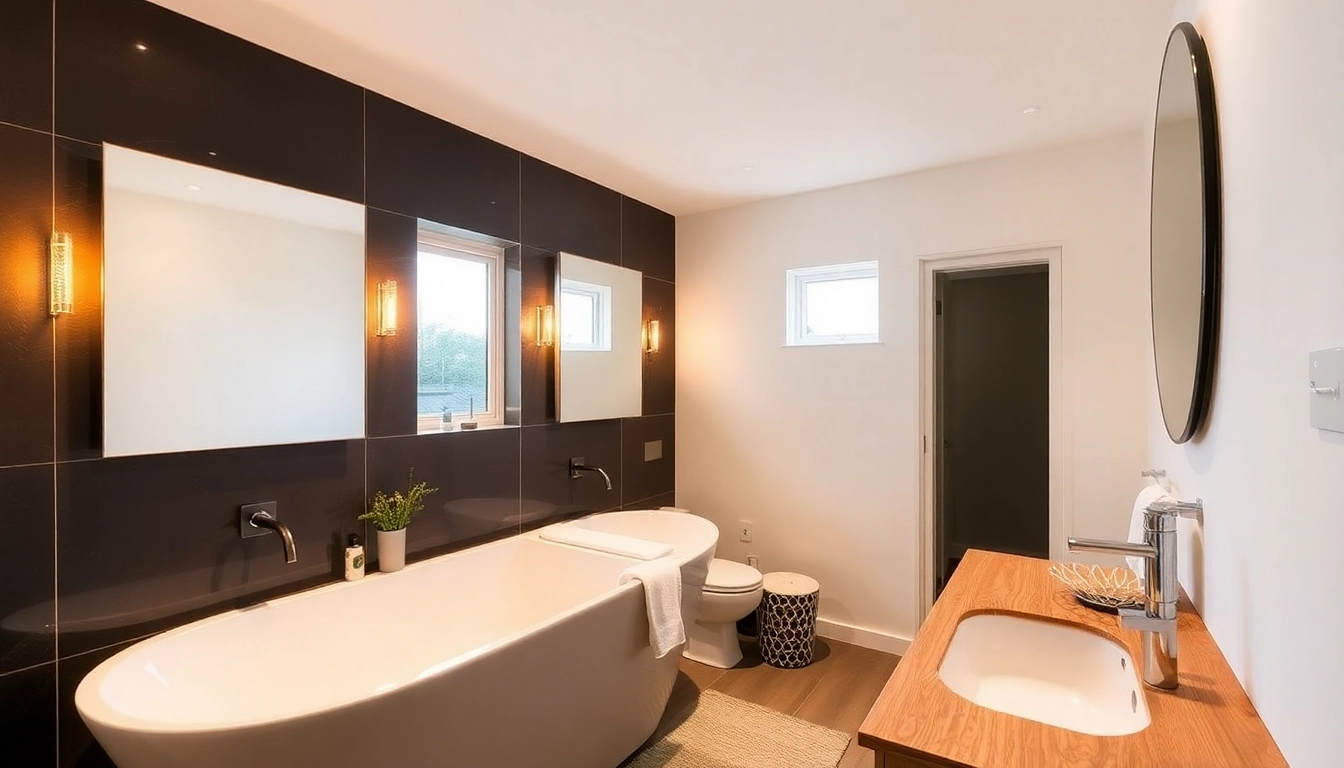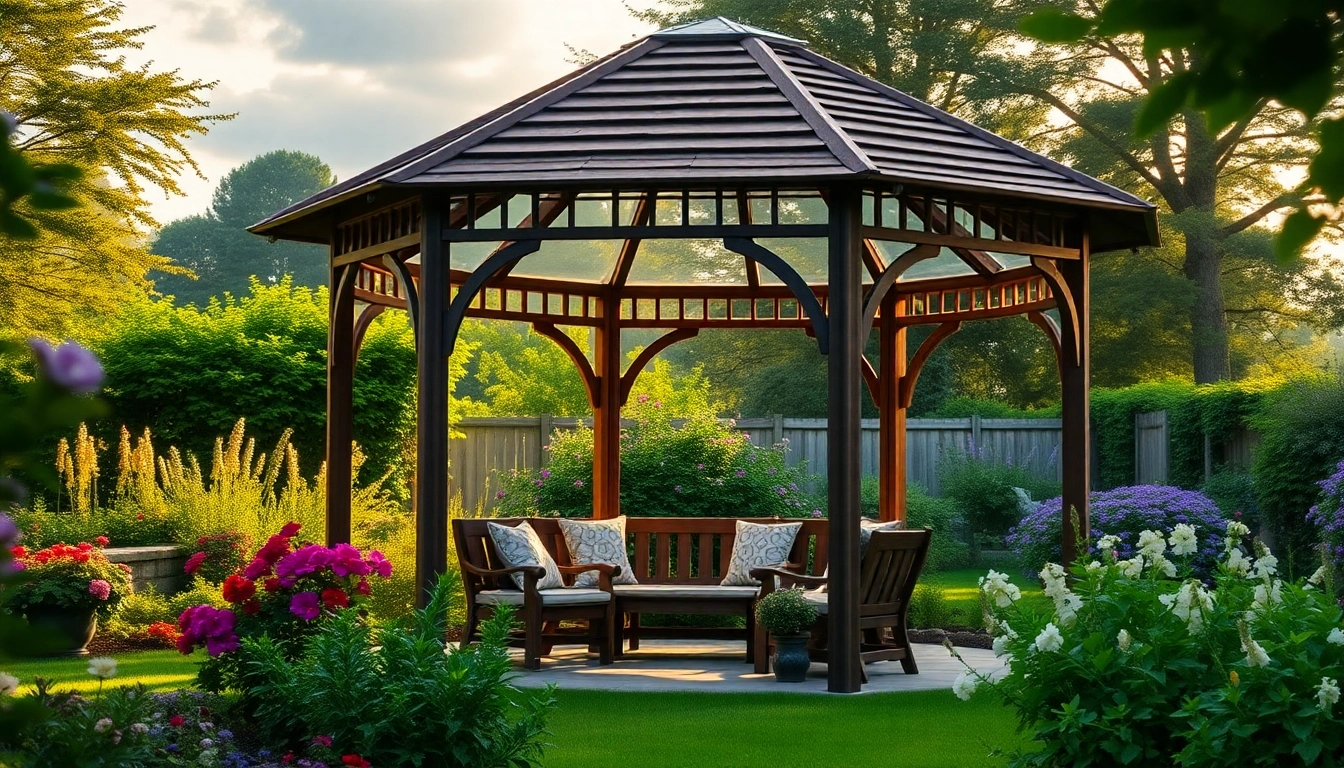Understanding Deck Construction Basics
Deck construction is more than just building a platform; it’s a blend of artistry, engineering, and landscaping that transforms outdoor spaces. Creating a deck involves several facets that include selecting quality materials, adhering to local codes, and understanding design principles. For homeowners looking to undertake a deck construction project, having a solid foundation of knowledge is essential for achieving a beautiful, durable structure that enhances the property’s value.
Choosing the Right Materials for Your Deck
Your choice of materials is crucial to the overall durability, aesthetic, and functionality of your deck. The most commonly used materials include:
- Pressure-Treated Wood: Typically the most cost-effective option, it resists decay but may require regular maintenance.
- Cedar and Redwood: These are naturally resistant to decay and insects but come at a higher price point.
- Composite Decking: Made from a blend of wood fibers and plastic, these materials are low maintenance and come in a variety of colors.
- PVC Decking: Similar to composites, PVC decks offer excellent durability and resistance to moisture.
Ultimately, your choice should align with your budget, desired aesthetic, and long-term maintenance goals.
Common Decking Styles and Designs
The design of your deck can significantly affect both its functionality and visual appeal. Here are some popular styles:
- Single-Level Deck: Ideal for ground-level spaces, these decks are easy to access and utilize.
- Multi-Level Deck: Offers depth and dimension, suitable for sloped yards or creating distinct areas for grilling, dining, or relaxing.
- Wrap-Around Deck: Extends around the home, allowing access to various entrances and offering picturesque views.
- Rooftop Deck: A creative solution for urban settings, maximizing space where ground-level options may be limited.
Choosing a design should consider the landscape and intended use, ensuring that the final product complements both the home and the existing outdoor environment.
Permits and Regulations in Deck Construction
Understanding local building codes and regulations is paramount before beginning a deck construction project. These codes govern various aspects of construction, including:
- Structural integrity and safety standards
- Materials allowed in construction
- Height limitations and set-backs from property lines
- Electrical and plumbing requirements if incorporating features like lighting or hot tubs
Consulting with local building officials or a licensed contractor can help ensure compliance, preventing potential legal and safety issues down the line.
Planning Your Deck Project
A well-thought-out plan is the backbone of any deck construction project. Efficiency in planning can lead to smoother execution and a more satisfying end result.
Creating a Deck Design Blueprint
A design blueprint serves as a roadmap for your deck project. It should outline dimensions, materials, and layout. Consider using design software or consulting a professional designer to create an accurate plan that optimizes space and aesthetics. Key elements to include are:
- Deck dimensions and layout
- Materials for the structure and surface
- Placement of railings, stairs, and lighting
- Access points from the home and yard
Having a detailed blueprint not only provides clarity but also assists in estimating costs and securing necessary permits.
Assessing Your Outdoor Space
Before breaking ground, analyze your outdoor space to determine how best to utilize the area. Consider the following:
- Sunlight and Shade: Assess how the sun moves across your yard at different times of day and how this affects comfort.
- Accessibility: Ensure easy access to the deck from your home and other areas of your yard.
- Proximity to Trees and Vegetation: Consider any potential issues that might arise from roots, debris, or shade.
This evaluation will help guide your design process, ensuring that your deck not only fits but enhances your existing landscape.
Estimating Costs for Deck Construction
Cost estimation should be an integral part of planning your deck project. Key factors affecting cost include:
- Size of the Deck: Generally, larger decks cost more due to increased material and labor.
- Materials Used: Higher quality or specialized materials can significantly increase overall costs.
- Design Complexity: Simple designs will generally be less expensive than those requiring complex features like multi-levels or custom railings.
- Labor Costs: Hiring a contractor adds to the total cost, but can save time and ensure professional results.
Gather quotes from multiple contractors and do-it-yourself estimates to develop a comprehensive budget that accommodates unexpected expenses.
Step-by-Step Guide to Building a Deck
Knowing the sequence of construction steps ensures an efficient build and helps prevent common issues that arise during the process.
Preparing the Site for Deck Construction
The first step in building your deck involves site preparation. This includes:
- Clearing the Area: Remove any obstructions such as plants, furniture, or debris from the construction site.
- Marking the Area: Use stakes and string to outline the dimensions of your deck based on your blueprint.
- Leveling the Ground: This may involve grading the soil to ensure a flat, stable surface.
- Digging Holes for Footings: Based on your design, dig holes for concrete footings, ensuring they are below the frost line.
Proper site preparation can save time and prevent problems during the framing stage of construction.
Framing and Installing the Deck Structure
Once the site is prepared, framing your deck is the next major step. This process includes:
- Building the Frame: Construct the frame using pressure-treated lumber for added durability.
- Installing Posts and Beams: Place the posts at the designated locations, securing them with concrete, and attach beams for structural support.
- Joist Installation: Attach joists to the beams at regular intervals; this framework supports the decking surface.
- Stability Checks: Ensure that all structural elements are secure and leveled before moving to decking.
Each step in this process is critical for building a safe and durable deck that will withstand the elements and usage over time.
Deck Surface and Finishing Touches
The final phase of deck construction involves installing the decking material and applying finishing touches:
- Installing Deck Boards: Lay the decking boards perpendicular to the joists, ensuring a consistent gap for drainage.
- Adding Railing and Stairs: Safety railings and steps can enhance functionality and accessibility.
- Finishing Touches: Sand rough edges, apply stain or sealant as necessary, and ensure all fasteners are properly secured.
Finishing touches contribute not only to the aesthetic appeal but also to the longevity and maintenance of your deck.
Best Practices for Durable Decks
To ensure your deck remains a valued asset, it’s essential to follow best practices during both construction and maintenance.
Maintenance Tips for Long-Lasting Decks
Regular maintenance extends the life of your deck. Consider the following:
- Cleaning: Regularly sweep away debris and wash surfaces with soap and water.
- Sealing: Apply a sealant every few years to protect wood from moisture and UV damage.
- Inspection: Routinely check for signs of damage such as loose boards, rusting hardware, and splintering.
Proactive care can keep your deck safe, functional, and beautiful for many years.
Common Mistakes to Avoid in Deck Construction
Ensuring a successful build means being aware of potential pitfalls:
- Neglecting Permits: Always secure the necessary permits to avoid fines and make sure your deck meets safety standards.
- Poor Material Choices: Opting for low-quality materials may result in frequent repairs or replacements.
- Skipping Maintenance: Regular upkeep is key to preventing serious issues down the line.
By avoiding these common mistakes, you set a solid foundation for a successful deck project.
Enhancing Your Deck with Outdoor Features
Once your deck is built, consider enhancing your outdoor space with additional features such as:
- Outdoor Furniture: Adding comfortable seating and dining options creates an inviting atmosphere.
- Lighting: Installing LED lights can improve visibility and ambiance during evening gatherings.
- Planters and Greenery: Incorporating plants and flowers can provide visual interest and shade.
These additions can elevate your deck’s utility and aesthetic, providing a charming space for relaxation and entertainment.
Conclusion: Transforming Your Outdoor Space
Your deck can significantly enhance your outdoor living experience. With careful planning, quality materials, and adherence to best practices, your project can deliver an inviting gathering space for friends and family.
Final Thoughts on Deck Construction
Embarking on deck construction is an investment in your home’s value and your family’s enjoyment of outdoor spaces. With the right approach, it can provide years of enjoyment and worry-free functionality.
Inspiring Deck Design Ideas
For those looking for inspiration, explore unique deck designs that blend functionality with style. Consider incorporating built-in seating, contrasting materials, or integrating a hot tub for added luxury.
Connecting with a Deck Construction Professional
If the scope of your project feels overwhelming, engaging a professional deck contractor can provide guidance and expertise, ensuring a successful and stress-free build.



